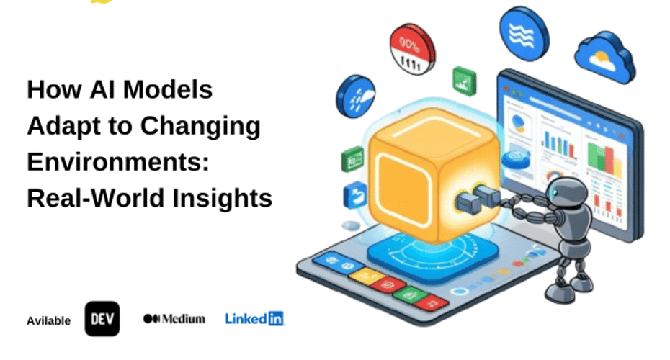Dev
1w
335

Image Credit: Dev
How AI Models Adapt to Changing Environments: Real-World Insights
- Artificial intelligence (AI) models must possess abilities beyond their initial training if they are to be successfully deployed in fast-changing, dynamic settings; they must be able to adapt continuously to new demands and contexts.
- Present AI models are often trained on static datasets optimized for specific tasks then deployed without further learning.
- If changes in the environment occur, the models will begin to perform less well or even become obsolete.
- To overcome that major weakness, continual learning or lifelong learning has been developed; this model learns new tasks in sequence without forgetting the previously learned information.
- Other techniques include transfer and fine-tuning learning, involving pre-training an AI model on a general dataset, so that it can be trained on more specific, smaller datasets.
- Reinforcement learning (RL) sees the model learn through trial and error by interacting with the environment and using feedback derived from those interactions.
- Meta-learning or learning to learn, where the model is taught how to learn efficiently from a range of larger tasks.
- Adversarial learning is where two different AI models are used, generating realistic samples of data while distinguishing between real and generated samples to force the initial generator model to adapt to the discriminant model's scrutiny.
- The ability to adapt to changing environments and contexts is essential to the successful deployment of AI models in real-world situations where there may be shifting conditions and unforeseen challenges.
- Adaptive AI can benefit a range of industries, from healthcare and finance to agriculture and manufacturing.
Read Full Article
20 Likes
For uninterrupted reading, download the app